Are you wondering if you can power an LED strip from both ends? You’re not alone. Many DIY enthusiasts and professionals alike have pondered this question. Rest assured, we have the definitive answer and the expertise to guide you through the process.
Powering an LED strip from both ends is possible and can help ensure even brightness and reduce voltage drop, especially for longer strips.
Curious about the benefits and the best practices for powering LED strips from both ends? Keep reading to discover expert tips and detailed insights that will illuminate your next project.
Understanding LED Strip Power Supply
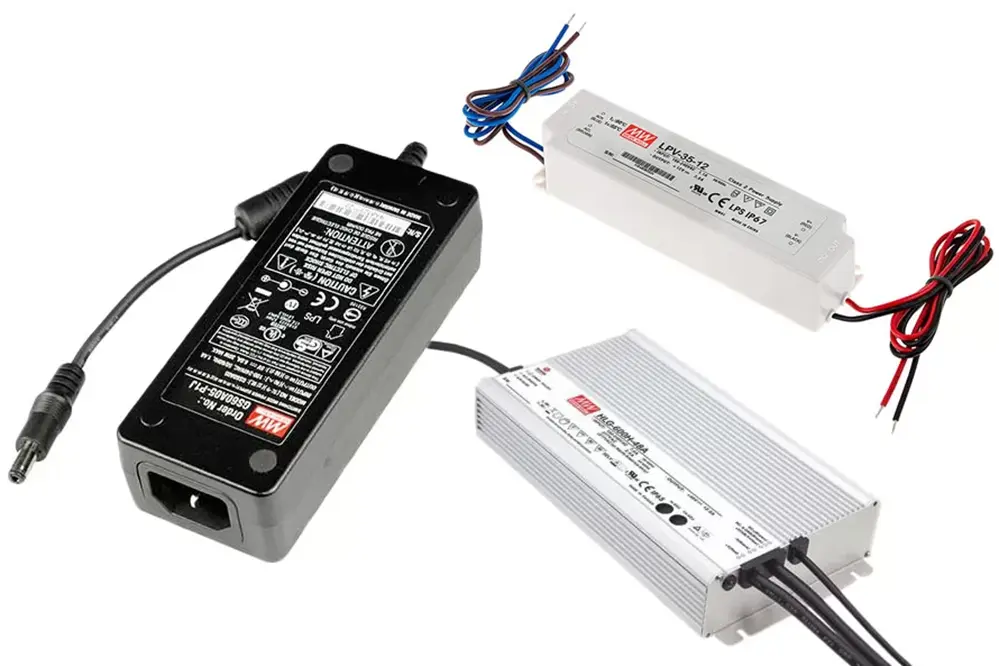
Power supply crucially affects LED strip performance.
Understanding how to power your LED strips correctly is essential. LED strips are iridescent and efficient, but if improperly powered, they can suffer from dimming or uneven lighting, negatively impacting their aesthetic use. Consequently, ensuring your LED strip gets adequate and consistent power from its supply is vital for optimal operation.
Required specifics depend on length.
Powering LED strips from both ends can dramatically enhance their performance. By doing so, you minimize the chances of voltage drop, which maintains the illumination intensity across the entire strip. This method ensures aesthetic beauty and operational efficiency.
Innovators are continually enhancing LED technology to bring advanced solutions to everyday problems, such as inconsistent lighting from voltage drops. Adapting and applying these modern power solutions for your LED strips can significantly impact both residential and commercial spaces.
Can You Power LED Strip From Both Ends?
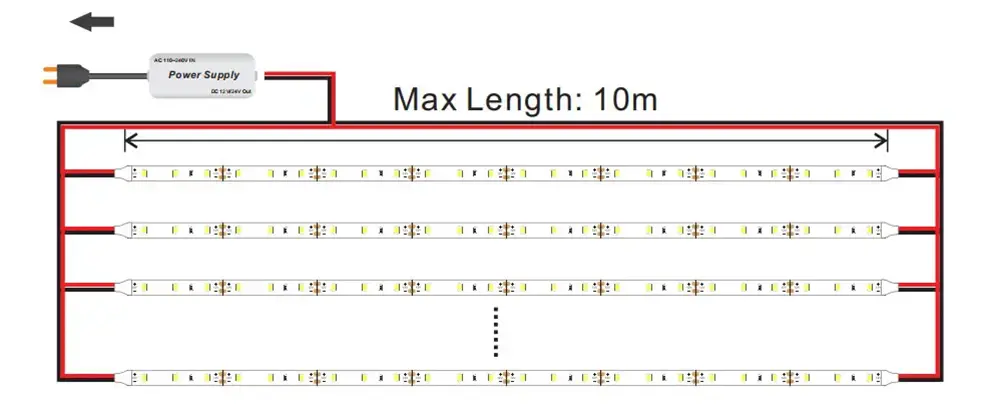
Yes, powering LED strips from both ends is indeed a viable approach.
This method significantly improves voltage stability along the entire strip.
When LED strips are powered from both ends, it helps alleviate voltage drop, ensuring consistent brightness across the entire length. It is particularly beneficial for longer strips, where power deficiencies are more likely to occur.
Implementing this can transform the effectiveness and appearance of your LED setup, providing an evenly illuminated result. By dispersing power more uniformly, you circumvent the common pitfall of dimming at the far end of the strip. Thus, this technique optimizes both functionality and aesthetics.
Benefits of Powering LED Strips From Both Ends
Powering LED strips from both ends delivers striking advantages for consistent illumination and optimal performance.
Firstly, this method ensures uniform brightness across the entire length of the strip. By mitigating voltage drop, you can maintain steady luminosity from start to end, eliminating any dimming that typically occurs on longer strips. This results in a more aesthetically pleasing and professionally finished look.
Secondly, it enhances the reliability and longevity of your LED strips. Consistent voltage minimizes the stress on the LEDs, reducing the risks of premature burnout. This not only extends the LED lifespan of your installation but also maximizes the return on your investment.
Moreover, this approach bolsters the efficiency of your lighting system. By distributing power uniformly, you can achieve better energy utilization and prevent overheating. This careful balance of power leads to a sustainable and cost-effective lighting solution, reflecting an advanced understanding of modern illumination technology.
Common Problems With Single-End Power Supply
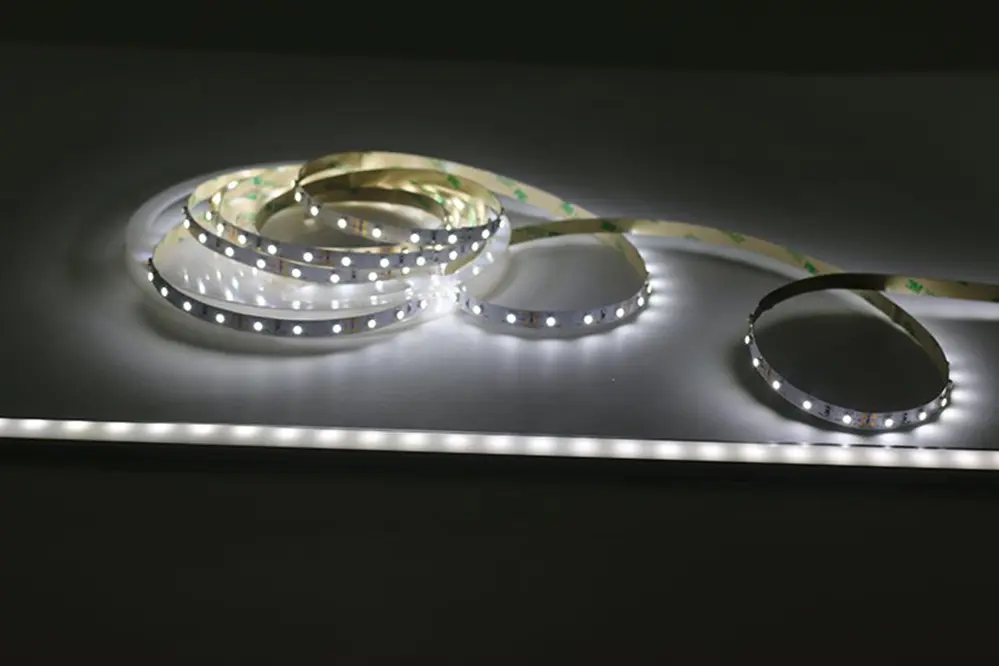
Improper power distribution can create inconsistent light output along the LED strip, diminishing the lighting performance. This is a prevalent issue when relying on a single-end power supply for LED strips.
Voltage drop across the length of the strip is a common culprit.
As electrical current travels farther from the power source, resistance causes a decrease in voltage, leading to dimmer lights at the strip’s far end. This can result in an unbalanced lighting effect and lower overall system efficiency.
Additionally, relying solely on one end for power can lead to excessive heat buildup, potentially damaging both the LEDs and the substrate. This situation could necessitate more frequent replacements and maintenance, contravening the cost-efficiency and longevity commonly associated with LED technology. Embracing dual-end power supplies can resolve these issues, offering enhanced performance and durability.
Tools Needed for Dual-End Powering
Harnessing dual-end power supply requires several essential tools to ensure optimal LED strip performance, and your success in this endeavor.
First, you’ll need a high-quality power supply unit.
Next, ensure you have appropriate gauge wire to maintain stable voltage.
Wire connectors and soldering tools are also crucial for securing connections. Make use of a multimeter to verify electrical continuity, ensuring precision, reliability, and peak performance from your LED strips.
Finally, insulation materials and cable management accessories will help in maintaining a clean and professional installation. With these tools in hand, you’ll be well-equipped to transform any space with consistent, vibrant lighting throughout.
Step-by-Step Guide to Powering LED Strips From Both Ends
Begin by preparing your workspace, ensuring you have easy access to both ends of the LED strip and all necessary tools.
First and foremost, identify the total length of your LED strip, as longer strips generally require additional power input to maintain brightness evenly. Measure the distance accurately, keeping in mind where you will place your power supply units for maximum effectiveness. Use a multimeter to confirm voltage drop over the length of the strip.
Next, cut the appropriate length of wire to reach both ends of the LED strip from the power supply. Strip the wire ends and prepare to connect them to the power supply and the LED strip. Be sure to use gauge wire suitable for the current your LED strip will draw, ensuring optimal performance and safety.
Finally, securely connect the wire ends to the power supply units and the LED strip. Use wire connectors or soldering tools to make reliable connections. Test the setup by turning on your LED strip and checking for consistent brightness. Ensure that all connections are insulated and organized with cable management accessories, providing a professional and tidy appearance. This setup will guarantee uniform illumination and enhanced longevity for your LED strip installation.
Ensuring Proper Voltage Distribution
Proper voltage distribution is crucial when powering LED strips from both ends. How can you achieve consistent brightness across the entire length?
In 2023, engineering advancements, such as sophisticated voltage regulators, greatly enhanced how LED strips maintain brightness uniformly. Yet, even with these technologies, direct power connections at multiple points are sometimes necessary.
So, it’s not just about whether you can supply power from both ends; it’s also about how effectively you manage that power to reduce voltage drops and ensure your LEDs shine brightly.
Examine the length of the strip first, considering that longer strips will experience greater voltage drop. Employ techniques such as parallel wiring and adequate power supplies to mitigate voltage inconsistencies.
Ensuring even voltage will not only keep your LED installation glowing brightly but also extend the lifespan of the LEDs.
Connecting Additional Power Supplies
Yes, you absolutely can.
When dealing with extensive LED strip installations, connecting additional power supplies can significantly enhance performance. The primary reason for this is that it allows for more consistent voltage distribution across the length of the strip, thereby ensuring even brightness and reducing the likelihood of dim sections. Therefore, ensuring adequate power supply points is not just beneficial but essential for optimal performance.
Powering strips from both ends.
It is even advisable to use multiple power supplies. For example, in very long installations, incorporating power supplies at intervals can prevent central sections from experiencing voltage drops, thus maintaining uniform brightness.
By adopting this approach, you can leverage the myriad of engineering advancements available in 2023 to their fullest potential. This not only optimizes performance but also maximizes the lifespan of your LED strips. Ultimately, strategically placed power supplies ensure an outstanding, long-lasting lighting solution that meets the highest standards of excellence.
Choosing the Right Connectors and Wires
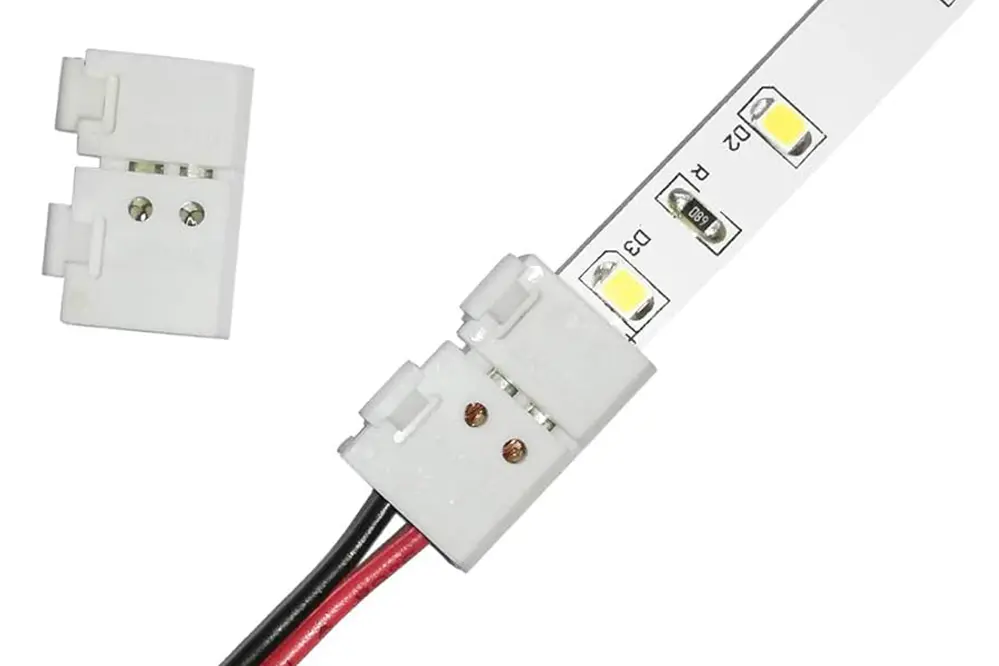
Selecting the optimal connectors and wires is fundamental to the success of your LED strip project.
Recent years, advances in connector and wire technology have revolutionized professional installations, enabling more robust and reliable connections than ever before. With these state-of-the-art tools, you can elevate your installations to unprecedented levels of durability.
Now, it’s not just about functionality but also aesthetics. Ensuring a seamless integration of connectors and wires into your setup can immensely enhance the aesthetic appeal. Properly chosen connectors make handling easier and secure a solid connection, mitigating potential electrical issues.
Always consider the gauge of the wires you choose. A thicker wire may be necessary for longer strips to handle the amperage without significant voltage drops. Additionally, focusing on high-quality materials such as copper ensures better conductivity and longevity.
With all these elements in place, your lighting system will not only perform exceptionally but also maintain its excellence over time.
Precautions for Safe Installation
In any LED strip installation project, safety should always be your foremost consideration. Prioritize understanding the voltage requirements and power supply specifications before you start.
Incorrect power sources can cause overheating, leading to potential fire hazards. Understanding and matching the strip’s specifications is paramount.
Ensure all connections are secure and insulated properly, and always consider the wattage requirements of your components to prevent overloading. Loose wires can create short circuits, posing significant risks.
Utilize appropriate waterproofing measures if installing LED strips in moisture-prone areas. This prevents electrical shocks and damage to the lighting components.
Regularly inspect the installation for any signs of wear or faulty connections. Routine maintenance ensures the longevity and safety of your LED installation.
Remember, the beauty of your setup shouldn’t come at the cost of safety. A well-executed project balances both without compromising either.
Avoiding Overheating and Voltage Drops
To mitigate the risk of overheating and voltage drops, employ thicker gauge wires, which ensure a robust delivery of power across the entire LED strip.
Such intentionality helps stabilize the voltage distribution along your installation.
Moreover, managing the polarity when powering LED strips from both ends—which entails connecting power supplies at both extremities—remedies these issues.
This approach results in more consistent brightness levels, mitigating diminished luminance often caused by extended wiring.
A more uniform lighting scheme showcases your setup’s true potential, reinforcing an aesthetically pleasing and professional installation.
Ultimately, ensuring your LED strip doesn’t suffer from either overheating or voltage drop fortifies your project’s efficiency and reliability.
Testing Your Dual-End Powered LED Strip
Begin by gathering all necessary tools.
Before you start, have a multimeter, power supplies, and connectors ready. Your preparation is key to a smooth testing process, so ensure all components are on hand before you proceed. This will save time and avoid pitfalls that could arise from missing equipment. Additionally, verify that your LED strip is compatible with dual-end power supply.
Check the initial voltage readings.
Measure the voltage at one end of the strip first. This baseline reading allows you to identify any discrepancies once both ends are powered. Consistency in the readings is crucial for determining the success of your setup. You are looking for nearly identical voltage measurements at both points.
Now, power the second end.
Take a multimeter reading at the second end. Compare the voltage levels to ensure they align closely. A substantial deviation might indicate an issue needing correction. With aligned voltages, you are looking at a more stable and uniform illumination across your LED strip.
Finally, observe the lighting uniformity.
With both ends powered, the LED strip should manifest consistent brightness all along its length. Any noticeable dimming or flickering could suggest power distribution issues that might require adjusting the connections or power sources.
By implementing this testing protocol, you maximize the performance and longevity of your LED installation. With a meticulously planned dual-end power supply, your lighting project will exude professionalism, reliability, and aesthetic brilliance.
Troubleshooting Common Issues
Encountering issues with your LED strip installation?
First, ensure all connections are secure and fully intact. Even small lapses can lead to noticeable discrepancies in performance. Loose wires or poorly soldered joints could be culprits necessitating meticulous rechecks and corrections. The importance of precision in this stage cannot be overstated.
Dim lighting can signify power inadequacy.
Inspect and verify your power source. If it does not provide adequate voltage and current, you may find portions of the strip underperforming. This could include upgrading the power supply or redistributing loads to achieve better results.
Severe flickering unravels a distinct problem.
It typically points to fluctuating power delivery or interference. Ensuring your power supply is stabilized and free from significant electrical noise will mitigate this issue. Superior-quality drivers often provide smoother operation and enhanced performance.
Monitoring and addressing these common issues will guarantee a flawless and impressive LED strip lighting experience. Regular assessments and prompt troubleshooting empower your installation to remain both functional and aesthetically extraordinary.
Comparing Single-End vs. Dual-End Powering
Powering LED strips from a single end involves connecting the power source at one end, enabling the current to flow through the entire length of the strip.
Conversely, dual-end powering means connecting both ends to a power source.
Single-end powering may suffice for shorter strips, but as the length increases, voltage drop becomes a concern, leading to uneven brightness and performance. However, dual-end powering offers a robust solution. By supplying power from both ends, voltage drop is minimized, ensuring consistent brightness.
In larger installations, dual-end powering is advantageous in achieving uniform illumination and optimizing performance. By mitigating voltage drops, it prevents dimming issues and prolongs the lifespan of your LEDs. Embrace this approach to elevate your installations to excellence.
Real-World Applications of Dual-End Powering
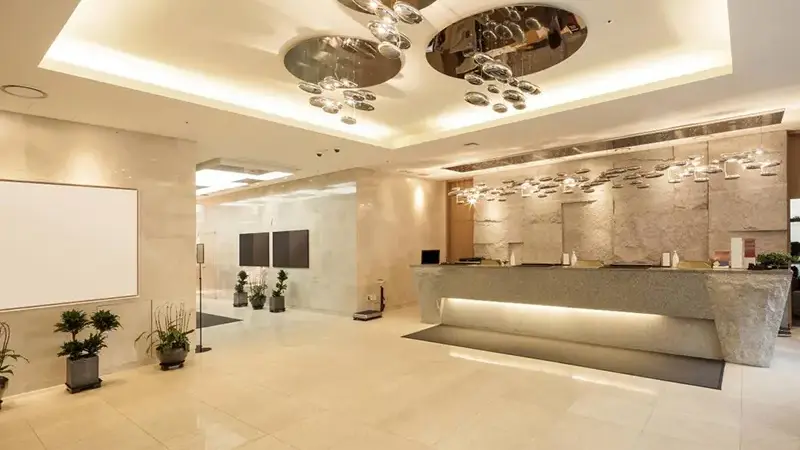
Dual-end powering unlocks numerous applications.
Architectural projects greatly benefit from this powering approach. Extensive linear installations in grand architectural structures often use LED strips for accentuating features, and dual-end powering ensures even illumination. Moreover, it is also an optimal strategy for enhancing the reliability of outdoor installations.
Event lighting is another realm.
Think of expansive stages that demand uniform lighting – not just in terms of decoration but also functional visibility. In these scenarios, dual-end powering provides a steadfast, high-performance lighting solution.
Finally, in retail spaces, consistent and appealing lighting is crucial for creating an inviting shopping environment. By mitigating voltage drops and ensuring uniform brightness, dual-end powering becomes a valuable technique for maintaining the visually enticing displays that captivate customers.
Expert Tips for Optimal LED Strip Performance
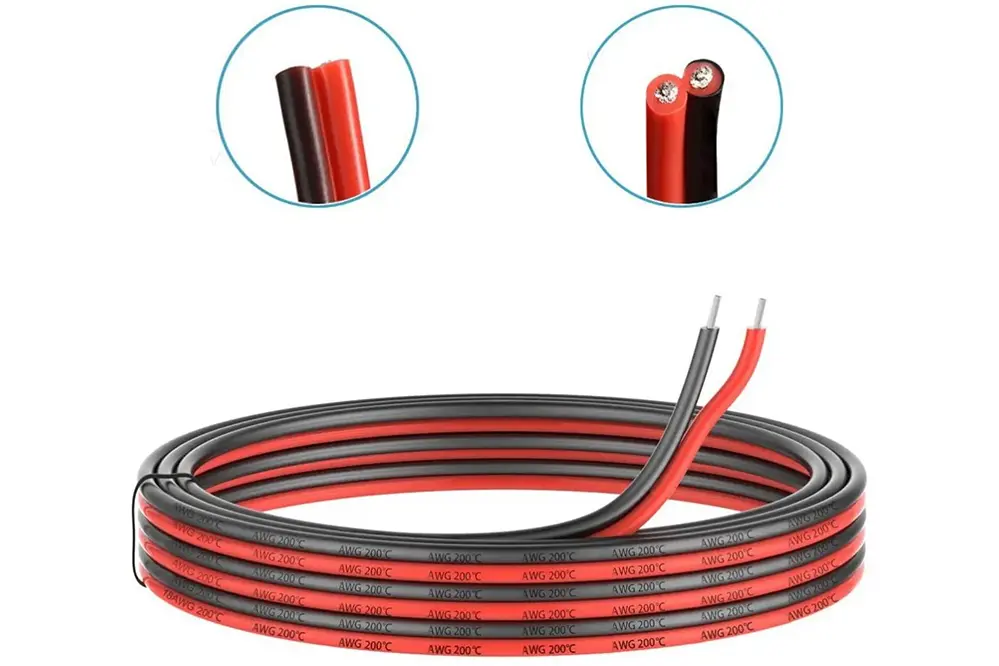
Ensure proper voltage regulation for your LED strips.
Voltage mismatches can cause flickering or complete failure. Thus, always verify you are using the correct power supply for your specific LED strip model, considering its voltage and current requirements. Furthermore, make sure to account for any voltage drop that might occur over longer distances.
Consider using thicker gauge wires.
Thicker wires reduce resistance, thus improving performance.
Implement an adequate cooling mechanism.
LED strips can generate heat – and too much heat can drastically shorten their lifespan. Therefore, it’s imperative to use heat sinks or ensure good ventilation to maintain optimal temperatures.
Finally, plan your layout meticulously to avoid voltage drops. A strategic approach involves powering your LED strip from both ends, which can significantly enhance performance by ensuring uniform brightness and longevity across the entire strip. This foresight not only improves the visual effect but also extends the lifespan of your lighting solution.
Conclusion
Powering LED strips from both ends is a strategic approach that mitigates voltage drops, ensuring consistent brightness across the entire strip. This method not only enhances the overall performance but also reduces the strain on any single power source, thereby extending the longevity of both the LED strips and their power supplies. By distributing the load more evenly, you achieve a more reliable and efficient lighting solution.
This technique is particularly invaluable in scenarios where uniform lighting is paramount, such as in commercial spaces or intricate home designs. With proper planning, the implementation of thicker wires, and effective cooling mechanisms, powering LED strips from both ends stands as a reliable strategy. Embrace this method to elevate your lighting projects, ensuring your LED installations shine brilliantly and uniformly from end to end.





